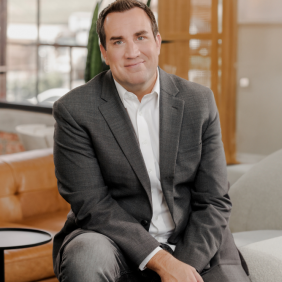During WWII, Allied bomber losses were high, so high that the British Air Ministry undertook a rigorous analysis in hopes of finding a solution. Their engineers set out to eyeball every bomber they could, gathering data on each bullet hole. After analyzing the results, engineers decided to reinforce the areas that had the highest concentrations of holes with armor plating.
It didn’t work.
Perplexed, the engineers assumed that the extra plating had made the planes too heavy and that the difficulty in handling the planes was offsetting the protection of the armor plating.
Enter Abraham Wald.
Wald, a mathematician, suggested simply that they put extra armor plating where the bullet holes weren’t. The idea was simple: if the planes are returning with bullet holes, obviously, those areas can be struck without causing the planes to crash. The planes that aren’t returning, Wald theorized, are the ones that are getting hit in different areas. This idea was so significant that statisticians decided to name it: survivorship bias (the tendency to include only successes in statistical analysis). Any time you only examine the successes, you will skew the results.
If we return to the airport bookstore of our minds, we see the shelves littered with survivorship bias. We love reading about successes. That’s why books by celebrity CEOs and leadership gurus are among the best sellers on any list.
We’d much rather read about the brilliant company leader who started working out of his garage and ended up dominating the industry. However, when this is all we consume about leadership, we succumb to survivorship bias. While a celebrity CEO may reveal the 7 secrets he used to climb to the top, how are we to know it works in every situation?
This is where theory comes in.
What is Theory?
Theory is the systematic framework or principles showing how organizational behavior and leadership work. It is based on research, vision, and analysis and set guidelines for practical implementation.
A theory is a guideline for how actions and decisions are driven in an organization.
Why Theory?
- Theory gives you a baseline for research. It gives you the complete background of how and why things are as they are so you can start your research with something solid.
- The theory works as a guideline for organizations in problem-solving and data interpretation.
- It provides text or tested material on which to base your research.
- It forms a structure for your research and a background for your study.
- It also provides an interpretation of the numbers and data you can use.
Leadership and organizational theories are constructed and tested by examining not just the successes but also the failures. Good and bad leaders, successful and failing change efforts, all get included in the analysis and the resulting theories spare us from our survivorship bias.
Role of Theory in Leadership and Organization
A theory is a written explanation of why some things work in an organization and why others do not. It gives us a clear and definite picture of the underlying practices at a workplace.
In leadership and organization practices, theory provides strategies that can be applied in real situations when needed to make informed decisions and implement solutions backed by research.
Leadership theory also helps you predict the outcomes of specific actions or decisions. This allows you to anticipate how a change will affect your organization. But that’s not it. Theories also help you find areas for improvement and make innovation efforts. Once you understand the principles that run leadership and organization, you can even try new approaches to meet your goals more effectively and efficiently.
Moreover, theories provide consistency to business practices. They are reliable and credible pieces of text backed by research with implementation procedures and proposed results.
Wrap Up
To conclude, theory is much needed to give us a direction on which to base our research and organization practices. While it may not give us a practical example to follow, it has a lot of implications for leadership and organizational behavior.
It’s like a concrete foundation to base your research on; without theory, you’re just throwing arrows in the air.
If we want to grow into outstanding leaders, we must know how and when to utilize the knowledge provided by the existing body of leadership research.
Good leaders focus on where the bullet holes are, Great leaders consider where they aren’t.
More Articles in This Series:
- Intro to Leadership Theory
- Why Theory
- A Word on Theory
- Trait Theory
- Skills Theory
- Style Theory
- Contingency Theory
- Situational Leadership Theory
- Path-Goal Theory
- Leader-Member Exchange Theory
- Transformational Leadership Theory
- Servant Leadership Theory
- Strengths-Based Leadership Theory

About the author
David Burkus is an organizational psychologist, keynote speaker, and bestselling author of five books on leadership and teamwork.